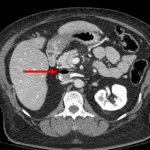Backboard usage by EMS is an important part of patient safety. It keeps the patient from injuring themselves or others within the confines of the ambulance or helicopter. But too much of anything is bad, and this is true of backboards as well. As little as 2 hours on a board can lead to skin breakdown. The most common reason that patients are not taken off boards sooner is concern for spine fractures. But the reality is that the board is not necessary once the patient arrives in the ED. If the spine is broken and they are admitted as an inpatient, they will be on log roll precautions on a regular hospital bed and mattress! I recommend that hospitals develop a policy for getting all patients off backboards as quickly as possible. The most convenient time is during the logroll to examine the back during the ATLS evaluation. Note: do not do a rectal exam during the logroll because this will cause the patient to wiggle more than you would like while they are up on their side. The goal should be to get the backboard removed within 20 minutes of patient arrival. I recommend placing a slider board under them if they will be visiting diagnostic areas like CT scan. But as soon as all studies are finished, pull the slider board as this can cause skin problems as well. Ideally, board removal should be documented, and this whole process can become a PI project.
Related post:


